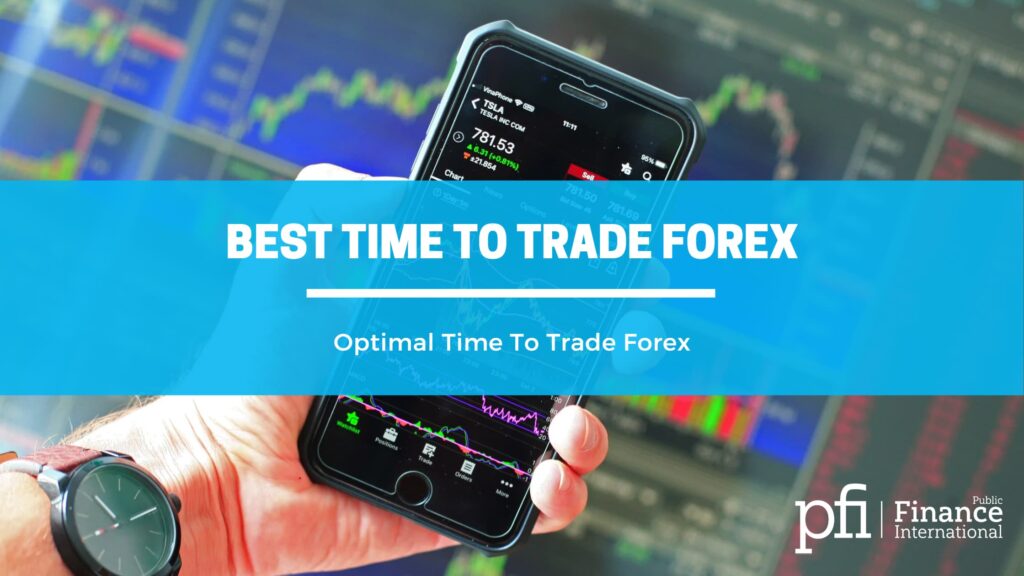The Foreign exchange market is open 24 hours a day and five days a week. Since the forex market operates per the usual business hours of four primary countries worldwide and their associated time zones, trading occurs day and night.
Although traders can access trading platforms anytime, this does not mean they should constantly be trading. The optimal times to trade are when the foreign exchange market is most active.
Most traders consider the overlap of the New York and London exchanges from 8 a.m. to noon the best forex trading time. The New York and London exchanges account for over 50% of forex trades.
Forex Market Hours
The Forex markets worldwide operate during different trading hours.
The trading day formally begins in Australia when the Sydney and New Zealand markets open at roughly 9 a.m. (GMT+10), signaling the start of the Asian-Pacific trading session. Tokyo, where most Asian currency trading occurs, joins them in the next two hours, followed shortly by Hong Kong and Singapore.
Below are the four major Forex trading sessions:
1. Tokyo 7 p.m. to 4 a.m.
The Tokyo session is part of the Asian forex trading session. This session starts at 0000 GMT. This session also coincides with Sydney trading hours, which begin two hours before Tokyo trading hours. The London session starts one hour after the Tokyo session ends.
Unlike the other two sessions, the Tokyo session has significant volume at the finish.
Despite the high volume of transactions, liquidity during the session can sometimes be low, especially compared to the London and New York sessions.
Major currency pairs to trade in the Tokyo session:
- USD/JPY
- EUR/JPY
- AUD/JPY
- NZD/JPY
2. New York 8 a.m. to 5 p.m.
The New York session, also known as the North American session, generates 16% of global forex volume.
Along with contributions from Canada, Mexico, and a few South American nations, the US is the session's primary source of influence.
Liquidity and volatility are often at their highest in the early hours, and they both tend to decline once European traders stop trading in the afternoon.
Currency pairs to trade in the New York session:
- EUR/JPY
- GBP/USD
- GBP/JPY
- USD/CHF
3. London 3 a.m. to 12 p.m.
London is the primary part of the United Kingdom (U.K.), which rules the global currency market.
A BIS report states that London, one of the world's key economic hubs, is responsible for 43% of all international commerce.
The Bank of England regulates the GBP's monetary system and controls interest rates and is headquartered in London. As a result, the city also greatly affects currency swings.
Top currency pairs to trade in the London session:
- EUR/USD
- GBP/USD
- EUR/JPY, and
- EUR/GBP
4. Sydney 5 p.m. to 2 a.m.
Even though it is the smallest mega-markets, it sees a lot of early activity when the markets reopen on Sunday afternoon. Forex dealers and financial institutions at that time were trying to regroup following the prolonged break since Friday afternoon.
You can trade several Forex currency pairs during the Sydney session with Reputable Forex Brokers in Australia.
The most popular currency pairs in the Sydney trading sessions are:
- AUD/NZD
- AUD/JPY
- USD/CHF
- EUR/USD
- GBP/USD
- USD/JPY
Best Time To Trade
Depending on the currency pair you're looking at, you can trade forex at the optimal time. If both exchanges are open simultaneously, the sessions for each FX pair will often have the most liquidity when they overlap.
Here's a brief overview of the best time to trade forex: Activity steadily increases from Sunday night to Monday. The rise then accelerates and reaches its apex on Tuesday.
On Wednesday, there is a slight drop in trade volatility before the next day sees a rise. Thursday and Friday are the two days of the week with the greatest volatility scores. On Friday, all activity stops at 17:00 GMT, and the market shuts down for the weekend.
8:00 AM to 11:00 AM: European-North American Overlap
When both primary forex trading hubs in London and New York are open for business, this overlap represents the most critical forex trading period.
During this time, trading in all European currencies is at its busiest, and currency pairs, including the Euro, Pound Sterling, and Swiss Franc, have the most liquidity.
Such extremely liquid overlapping hours would include the critical period when the major trading centers operate.
Additionally, the market for the EUR/USD, USD/CHF, or GBP/USD currency pairs, the main currency pairs involving the United States and European nations, would probably be the most active during that time if you were trading them.
2:00 AM to 4:00 AM: Sydney-Tokyo Overlap
While Sydney and Tokyo's overlap is not as noticeable as London and New York's, it is still a good time to trade between 12:00 and 07:00 GMT.
Monday Afternoon
Avoid Monday mornings when trading. You should trade on Monday afternoons instead. The market is beginning to warm up as trading volume rises.
Note that you should not expect a high forex market liquidity during this time, but it's still worthwhile to check the market on Monday afternoon.
When There Is High Liquidity (Tuesday-Thursday)
The currency market is most busy in the middle of the week, particularly Tuesday mornings through Thursday afternoons.
On Tuesday, the market sees its first significant uptick in activity as trading quickened.
This is why Tuesday is a good day to trade Forex. On Wednesday, there is a little drop in volatility. The trading activity is mostly centered between Mondays and Tuesdays.
When it comes to trading, the week's middle is when activity is at its peak, so if liquidity is what you're looking for, try to restrict most of your transactions to that time.
What Day Should You Not Trade?
Fridays
Trading on Friday has the potential for a huge reward, but it also carries a substantial risk. There are several reasons why trading on Friday is not advisable:
1) Significant opening gaps
2) Wider spreads
3) Poor market conditions
There is a growing overlap between the major currency pairings traded during the European and Asian sessions. They are still almost as unpredictable as they had been on Thursday.
Thus, the market gets quite disorderly on Fridays, there is typically very little trading activity, and prices start to fluctuate again. It's best to avoid trading on Fridays.
Which Is The Best Month To Trade Forex
The best months to trade forex are the months of January through May.
Although there is a distinct drop in market activity at the end of December, it is still a generally good month for trading.
Holidays are the primary cause of this volatility change. Any holiday season inevitably results in a drop in trading activity. Following the holiday season, market activity picks up.
It's a good idea to avoid trading throughout the holiday season and resume it after everyone has recovered from their vacation hangover.
Why Is It Difficult to Time the Market?
The key to profitable forex trading is timing. But it's far easier said than done to time the market.
If you've ever traded on a regular stock market, you know that trying to schedule trades to take advantage of discounts and recessions almost always costs you money in the long term. Although these price changes and corrections are unavoidable, their timing is not always foreseeable.
No trading method is perfect, but it can help you estimate the timing of these trades with some degree of precision.
Many factors can influence price movement and the timing of such fluctuations. Dependable chart patterns and government-issued economic reports—might be simpler to monitor and trade around.
Others, including breaking financial or economic news or abrupt shifts in trading emotion, can be difficult or impossible to foretell.
Building a trading strategy that considers as many factors as possible can assist you in finding chances to predict when price moves will occur reasonably.
Final Thoughts
We outlined the best times for forex trading. The best times are when the biggest exchanges work.
Trading forex is risky. We recommend trying demo accounts before opening a real cash account. This way you can test your forex trading strategies before investing real money.




